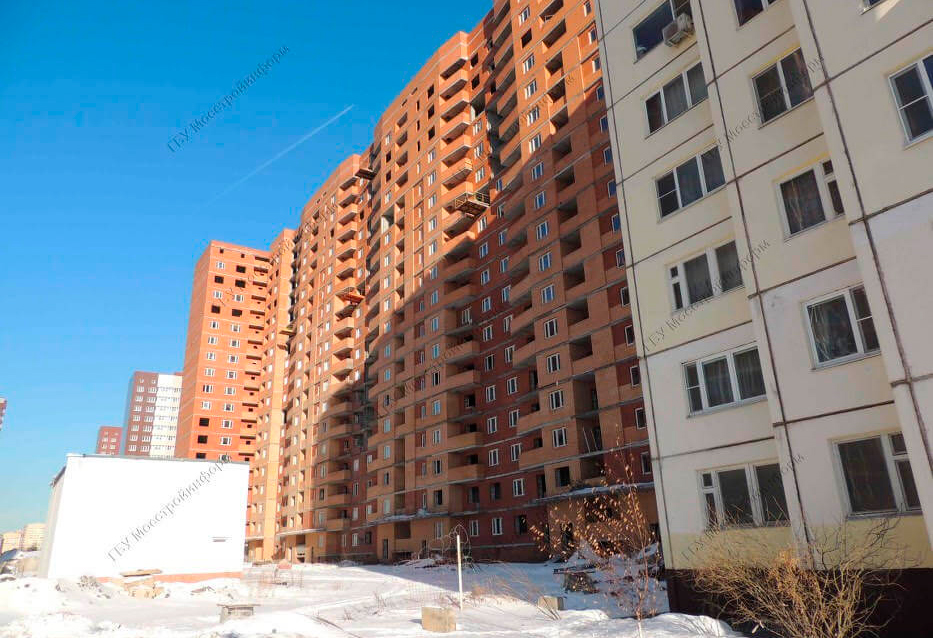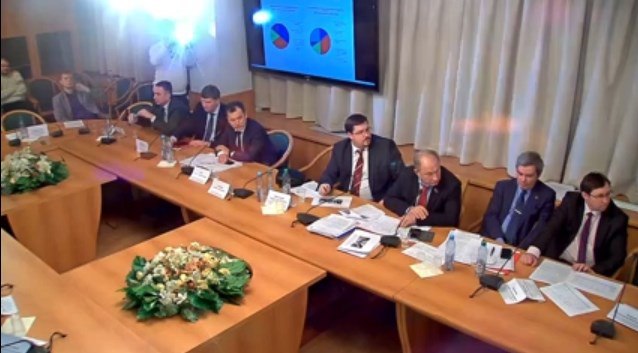STATE COMMITTEE OF THE RUSSIAN FEDERATION
ON CONSTRUCTION AND HOUSING AND COMMUNAL
COMPLEX
(Gosstroy of Russia)
METHODOLOGY
DEFINITIONS OF VALUE
CONSTRUCTION PRODUCTS
IN THE RUSSIAN TERRITORY
FEDERATIONS
MDS81-35.2004
(as amended on March 20, 2006)
Moscow2004
Methodology for determining the cost of construction products in the Russian Federation, (MDS81-35.2004) (Gosstroy of Russia) Moscow, 2004
In accordance with the order of the Government of the Russian Federation of November 27, 2003 No. VYA-P10-14161, the provisions contained in the Methodology apply to all enterprises of the construction complex of the Russian Federation when determining the cost of constructing new, reconstruction, expansion and technical re-equipment of existing enterprises, buildings and structures, implementation repair and commissioning works, regardless of the sources of financing, carried out on the territory of the Russian Federation, as well as in the formation of prices for construction products and calculations for the work performed.
DEVELOPEDThe Department of Pricing and Estimation of Standardization of the Gosstroy of Russia (supervisor - V.A. Stepanov, executive officer - E.E. Ermolaev, I.Yu. Nosenko), with the participation of the Baltic Construction Company (V.M.Simanovich), Central Research Institute Economics and Management in Construction (V.I. Koretsky, V.M. Didkovsky, Zh.G. Chernyshova), Scientific and Technical Center "Stroyinvestnauka" of Moscow State University of Civil Engineering (N.M. Shumeyko, V.P. Berezin, S .B. Collectors), GASIS (I.T. Tsirunyan), Transstroy Corporation (S. S. Abdrakhmanov, Kh.Z. Bashirova), INiK CJSC (Yu.V. Zhabenko, V.M. Beznos), Committee for the Operation of the Housing Fund of the Administration of St. Petersburg (N.M. Letenko).
APPROVEDScientific and Technical Council of the Gosstroy of Russia.
APPROVEDOffice of pricing and budgeting Gosstroy of Russia.
ADOPTED AND IMPLEMENTEDsince March 9, 2004, by the resolution of the Gosstroy of Russia dated 05.03.2004 No. 15/1.
CONSIDEREDThe Ministry of Justice of Russia and recognized as a document that complies with the legislation of the Russian Federation and does not need state registration (letter dated 10.03.2004. No. 07/2699-UD).
REPLACE“Code of rules for determining the cost of construction as part of pre-project and design estimates” SP 81-01-94, introduced by a letter from the Ministry of Construction of Russia dated 12.29.94 No. VB-12-276, “Guidelines for determining the cost of construction products in the Russian Federation "MDS 81-1.99, enacted by resolution of the Gosstroy of Russia dated 04/26/99 No. 31," Guidelines for the use of GESNm-2001 for construction and special construction works "MDS 81-28.2001," Guidelines for the use of GESNp-2001 for installation of equipment "MDS 81-29.2001, “Directions for use GESNm-2001 for commissioning "MDS 81-27.2001, General guidelines for the use of GESNr-2001 for repair and construction works, as well as" Temporary guidelines for determining the cost of construction and repair of roads "MDS 81-30.2002.
INTRODUCTION
The methodology for determining the cost of construction products in the territory of the Russian Federation (hereinafter referred to as the Methodology) was developed in accordance with the current legislation of the Russian Federation on the basis of methodological and regulatory documents provided for by the estimated regulatory base of pricing in construction in 2001.
The methodology incorporates general methodological provisions for the preparation of budget documentation and the determination of the estimated cost of construction, the implementation of repair, installation and commissioning works at all stages of the development of pre-project and project documentation, the formation of contract prices for construction products and settlements for work performed. The Methodology highlights the main provisions for the application of elementary estimated norms and prices, as well as limited and other works and costs provided for by the estimated regulatory base of pricing in construction in 2001.
The Methodology takes into account the requirements and provisions of regulatory legal methodological documents as of March 1, 2004.
In accordance with the order of the Government of the Russian Federation of November 27, 2003 No. VYA-P10-14161, the provisions contained in the Methodology apply to all enterprises of the construction complex of the Russian Federation when determining the cost of constructing new, reconstruction, expansion and technical re-equipment of existing enterprises, buildings and structures, implementation repair and commissioning works, regardless of the sources of financing, carried out on the territory of the Russian Federation, as well as in the formation of prices for construction products and calculations for the work performed.
Disagreements regarding the application of estimated standards are subject to consideration by the authorized federal executive body in the field of construction.
Comments and suggestions for further improvement of the Methodology should be sent to the address: 119991, Moscow, ul. Builders, 8, building. 2, Office of pricing and budgeting Gosstroy of Russia.
application
to the resolution of the Gosstroy of Russia
dated March 5, 2004 No. 15/1
METHODOLOGY
DEFINITIONS OF COST OF CONSTRUCTION PRODUCTS ON
TERRITORIES OF THE RUSSIAN FEDERATION
I. GENERAL PROVISIONS
This Methodology is intended to determine the cost of new construction, reconstruction, expansion and technical re-equipment of existing enterprises, buildings and structures, repair and commissioning works (hereinafter construction) carried out in the Russian Federation, as well as pricing of construction products.
The provisions given in the Methodology are recommended for use by organizations, regardless of departmental affiliation and forms of ownership, carrying out construction with the involvement of the state budget at all levels and state extra-budgetary funds, as well as extra-budgetary sources of financing.
The provisions of this Methodology can also be applied in determining the cost of restoration work.
II. GENERAL INFORMATION ABOUT THE SYSTEM OF PRICING AND ESTIMATED NORMING IN CONSTRUCTION
2.1. The current system of pricing and estimated regulation in construction includes state estimated standards and other estimated regulatory documents (hereinafter referred to as estimated standards), which are necessary to determine the estimated cost of construction.
Estimated standards 1 is a generalized name for a complex of estimated norms, prices and prices, combined into separate collections. Together with the rules and regulations containing the necessary requirements, they serve as the basis for determining the estimated cost of construction.
2.2. Under the estimated norm, we consider the totality of resources (labor costs of construction workers, working hours of construction machines, the need for materials, products and structures, etc.) installed on the adopted measuring instrument for construction, installation or other works.
The main function of the estimated norms is to determine the normative amount of resources, the minimum necessary and sufficient to perform the corresponding type of work, as the basis for the subsequent transition to cost indicators.
Given that the estimated standards are developed on the basis of the principle of averaging with minimizing the consumption of all necessary resources, it should be borne in mind that the standards are not adjusted in the direction of their reduction.
Estimated norms and prices provide for the performance of work in normal (standard) conditions, not complicated by external factors. When performing work in special conditions: tightness, gas contamination, near existing equipment, in areas with specific factors (high altitude, etc.) - the coefficients given in general terms to the corresponding collections of standards and rates are applied to estimated standards and prices,
Types of estimated standards
2.3. Estimated standards are divided into the following types:
state estimated standards - GOS;
industry estimated standards - DOS;
territorial estimated standards - TSN;
company estimated standards - FSN;
individual estimated standards - ISN.
State, production and industry, territorial, company and individual estimated standards form a system of pricing and estimated rationing in construction.
The state estimated standards include estimated standards that are part of the 8th group of subgroups 81, 82 and 83 “Documents on the economy”.
Sectoral estimated standards include estimated standards introduced for construction carried out within the relevant industry.
Territorial estimated standards include estimated standards introduced for construction carried out on the territory of the respective constituent entity of the Russian Federation.
Territorial estimated standards are intended for organizations carrying out construction or major repairs on the territory of the corresponding constituent entity of the Russian Federation, regardless of their departmental subordination and sources of financing for the work performed.
For company estimated standards or their own regulatory user base are estimated standards that take into account the real conditions of activity of a particular organization - the manufacturer of the work. As a rule, this regulatory framework is based on standards of the state, branch or territorial level, taking into account the characteristics and specialization of the contractor.
In the absence of estimated norms and prices of separate standards in the current collections for the work technologies provided for in the project, it is allowed to develop the corresponding individual estimated norms and unit prices, which are approved by the customer (investor) as part of the project (working draft). Individual estimated rates and prices are developed taking into account the specific conditions of the work with all the complicating factors.
The use of company and individual estimated standards for determining the cost of construction, the financing of which is carried out with the involvement of the federal budget, is recommended after their approval by the appropriate authorized federal executive body in the field of construction.
When applying individual estimated norms and prices, accrual on them of the increasing coefficients given in Appendix No. 1 is not performed.
2.4. Estimated standards are divided into elemental and enlarged.
Elemental estimated standards include state elemental estimated norms (GESN-2001) and individual elemental estimated norms, as well as norms for types of work.
The aggregated estimated standards include:
estimated standards, expressed as a percentage, including:
overhead rates;
standards of estimated profit;
estimated norms of additional costs in the construction and installation works in the winter;
estimated cost standards for the construction of temporary buildings and structures;
indices of changes in the cost of construction, installation and design and survey work, set to a base price level;
cost standards for the maintenance of the customer's service (technical supervision)
aggregated estimated standards and indicators, including:
aggregated indicators of the basic cost of construction (UPS);
aggregated indicators of the base cost by type of work (UPSB BP);
collections of indicators of cost for types of work (collections of TACs);
aggregated resource standards (URN) and aggregated resource indicators (UPR) for certain types of construction;
aggregated indicators of estimated cost (OSS);
price lists for the consumer unit of construction products (PPE);
price lists for the construction of buildings and structures;
estimated norms of expenses for equipment and inventory of public and administrative buildings (NIAZ);
estimated cost standards for tools and equipment of industrial buildings (NIPZ);
indicators for peers;
and other regulations.
In order to achieve improved accuracy of estimates when preparing estimates based on consolidated estimates, it is possible to apply amendments that take into account:
changes in the technical level and social progress over the period from the time of completion of construction of a similar facility to the time of design and construction of a new facility;
non-standard engineering and geological conditions that affect design decisions on the foundations and foundations of buildings;
regional fluctuations in prices for material and technical resources;
differences in architectural planning and design solutions; other factors.
Application and development of elemental estimated norms and prices
2.5. State Elementary Estimated Norms (GESN) are designed to determine the composition and need for material and technical and labor resources necessary for construction, installation, repair, construction and commissioning. Hydroelectric power stations are used to determine the estimated cost of the work performed by the resource method, to develop unit rates for various purposes (federal, territorial, industry, company) and aggregated estimated standards.
HPPN collections are used to determine direct costs as part of the estimated cost of construction by the resource method, to develop unit prices, individual and aggregated estimated norms (quotes) used in construction.
Resource indicators obtained on the basis of the HES are used in the development of construction organization projects (PIC) and work production projects (PPR), to determine the duration of the work, compile technological documentation and various analytical goals.
Resource indicators obtained on the basis of HPPN can serve as the basis for production standards for the consumption of materials and their write-off.
2.6. The state elemental estimated norms of the GESN-2001 are part of the intersectoral system of documents in construction.
The composition of state elemental estimated norms includes:
collections of state elemental estimated norms for construction and special construction works (GESN);
collections of state elemental estimated norms for repair and construction works (GESNr);
collections of State elemental estimated norms for installation of equipment (GESNm);
collections of State elemental estimated norms for commissioning (GESNp).
For special technological equipment, ministries, departments and other sectoral structures are developing departmental elemental standards for commissioning (VESNp).
2.7. GESN collections reflect the industry average level of construction production for the adopted equipment and technology for work execution and can be used by organizations by customers and contractors regardless of their departmental affiliation and ownership. GESN does not apply to certain designs and types of work, capital requirements, accuracy class and quality of which are subject to increased requirements, as well as types of work in the mountains, performed at an altitude of more than 3500 m above sea level. For these types of work, individual elemental estimated norms or correction factors are developed that take into account the corresponding features of the work.
2.8. GESN collections contain the technical part, introductory instructions to sections, tables of estimated norms and appendices. The technical parts provide guidance on the procedure for applying collections of estimated norms, coefficients to estimated norms, taking into account the conditions of work, as well as rules for calculating the volume of work.
2.9. GESN tables contain the following normative indicators:
labor costs of workers (builders, installers), per person-h;
average level of work (workers link);
labor costs of drivers, in man-hours;
the composition and duration of operation of construction vehicles, mechanisms, devices, mechanized tools in machine-hours;
a list of materials, products, structures used in the manufacturing process, and their consumption in physical (natural) units.
2.10. In the collections of HESNp, taking into account the specific features of commissioning (NDP), are given:
information on the composition of the link (team) of commissioners (number, specialties of engineering and workers);
labor costs in general per unit, in man-hours;
The following resource indicators are not indicated in the tables of the estimated norms of HESNp:
the consumption of material (including energy) resources, raw materials and semi-finished products used during the commissioning;
labor costs of operating personnel involved in the commissioning and comprehensive testing of equipment;
the use of mechanisms, including instrumentation.
The indicated costs are determined on the basis of design data.
2.11. Estimated prices for construction works and structures, equipment installation, as well as repair, construction and commissioning work, which are combined into unit price collections (EP), are developed on the basis of the GESN.
2.12. EP collections are developed at a basic price level (as of January 1, 2000) and are an integral part of the pricing and estimated rationing system in construction operating on the territory of the Russian Federation.
Unit prices from EP collections are intended to determine direct costs in the estimate documentation and to develop aggregated estimate standards for structures and types of work.
2.13. EP collections for construction (repair) works, equipment installation and commissioning are divided into federal (FER), territorial (hereinafter - TER) and industry (hereinafter - OER) by the level of application.
FER collections contain a complete set of quotations for the types of work performed on the territory of the Russian Federation, and are developed at the main price level for the 1st base district (Moscow region).
FER collections together with state elemental estimated norms form a unified state estimated and normative base for the development of a system of aggregated estimated norms.
The territorial collections of the EP include unit rates, tied to local construction conditions, which are used during construction within the administrative territory of the Russian Federation (region).
EP industry collections are developed for specialized types of construction (energy, transport, water management, mining, gas pipelines, communications, certain types of industrial facilities, etc.).
2.14. The basis for the development of unit prices in the basic price level (hereinafter referred to as "unit prices" or "prices") are:
elemental estimated standards for structures and types of work;
estimated norms and prices for the operation of construction vehicles;
estimated prices for building materials, products and structures.
2.15. In cases where the necessary estimated standards are not available in the current budget and regulatory framework or the technology of work and the need for resources differ significantly from those provided in the collections of the current elemental estimated norms of the GESN, the development of individual norms and prices is possible.
2.16. Unit rates are summarized in tables and contain the following indicators for the meter of structures or works adopted in them:
labor costs of workers (other than labor costs, taken into account in the cost of operating construction machines) as of 01.01.2000;
the cost of operating construction machines, including the remuneration of workers servicing machines as of 01.01.2000;
the cost of materials, products and structures (except materials, structures and products, the cost of which is not taken into account in a unit price) as of 01/01/2000;
consumption rates of materials (in physical terms), the cost of which is not taken into account in a unit price;
names and consumption rates of materials, products and structures, the characteristics of which are taken in the preparation of estimates according to design data.
2.17. Unit pricing tables have a code, name, scope of work, meter and quantitative indicators of resource consumption rates.
2.18. Materials, products and designs are presented in tables of estimated standards for generalized nomenclature, as a rule, without specifying brands and additional characteristics. When making estimates, specific material resources are taken into account based on project data. For certain materials, products and structures, the consumption of which depends on design decisions (cable, wires, pipes, metal structures, etc.), only the names are indicated in the tables of estimated standards, and in the graphs the flow is indicated by the symbol "P". When drawing up budget documentation, the consumption of these material resources is determined by the design data, taking into account difficult to eliminate losses and waste.
Review and amendment of estimated standards
2.19. The basis for the revision of estimated standards, amendments and additions to them may be the results of completed research or experimental work, the study and generalization of domestic and foreign experience in the preparation and application of budget documentation, monitoring compliance with the requirements of estimated standards.
2.20. Each change made to the corresponding collection of estimated standards is assigned a serial registration number.
Each addition to the collections of estimated standards is assigned a title sign: “Issue (hereinafter the serial number is affixed)”.
application
to the Resolution of the Gosstroy of Russia
dated March 5, 2004 No. 15/1
METHODOLOGY
RUSSIAN FEDERATION
STATE COMMITTEE OF THE RUSSIAN FEDERATION
ON CONSTRUCTION AND HOUSING AND COMMUNAL COMPLEX
RESOLUTION of March 5, 2004 No. 15/1
ON THE APPROVAL AND IMPLEMENTATION OF THE METHODOLOGY
DEFINITIONS OF COST OF CONSTRUCTION PRODUCTS IN THE TERRITORY
RUSSIAN FEDERATION
List of amending documents (as amended by Order No. 220 of the Ministry of Regional Development of the Russian Federation 01.06.2012
Order of the Ministry of Construction of Russia dated 06.16.2014 No. 294 / pr)
The State Committee of the Russian Federation for construction and housing and communal services decides:
To approve and put into effect on March 9, 2004 the attached Methodology for determining the cost of construction products in the Russian Federation.
Chairman N.P. KOSHMAN
Does not need state registration. Letter of the Ministry of Justice of Russia dated March 10, 2004 No. 07/2699-UD.
List of Modifying Documents
(as amended by Order of the Ministry of Regional Development of Russia dated 01/06/2012 No. 220, Order of the Ministry of Construction of Russia dated 16.06.2014 No. 294 / pr)
In accordance with the order of the Government of the Russian Federation of November 27, 2003 No. VYA-P10-14161, the provisions given in the Methodology apply to all enterprises
the construction complex of the Russian Federation when determining the cost of building new, reconstruction, expansion and technical re-equipment of existing enterprises, buildings and structures, performing repair and commissioning works, regardless of the sources of financing, carried out on the territory of the Russian Federation, as well as when setting prices for construction products and calculations for the work done.
DEVELOPED by the Department of Pricing and Estimated Standardization of the Gosstroy of Russia (supervisor - V.A. Stepanov, executive officer - E.E. Ermolaev, I.Yu. Nosenko),
participation of the Baltic Construction Company (V.M.Simanovich), Central Research Institute of Economics and Management in Construction (V.I. Koretsky, V.M.
Didkovsky, J.G. Chernyshov), Scientific and Technical Center "Stroyinvestnauka" of Moscow State University of Civil Engineering (N.M. Shumeyko, V.P. Berezin, S.B. Sbornikov), GASIS (I.T. Tsirunyan), Transstroy Corporation (S. S. Abdrakhmanov, Kh.Z. Bashirova), CJSC IniK (Yu.V. Zhabenko, V.M. Beznos), Committee for the Operation of the Housing Fund of the Administration of St. Petersburg (N.M. Letenko).
APPROVED by the Scientific and Technical Council of the Gosstroy of Russia.
SUBMITTED FOR APPROVAL by the Department of Pricing and Estimated Rationing of the Gosstroy of Russia.
Adopted and put into effect on March 9, 2004 by resolution of the Gosstroy of Russia dated 05.03.2004 No. 15/1.
CONSIDERED by the Ministry of Justice of Russia and recognized as a document that complies with the legislation of the Russian Federation and does not need state registration
(letter of March 10, 2004 No. 07/2699-UD).
MISCELLANEOUS “Code of rules for determining the cost of construction as part of pre-design and design estimates” SP 81-01-94, introduced by a letter from the Ministry of Construction of Russia from
12/29/94 No. VB-12-276, “Guidelines for determining the cost of construction products in the territory of the Russian Federation” MDS 81-1.99, put into effect
Resolution of the Gosstroy of Russia dated 26.04.99 No. 31, “Instructions for the use of HESN-2001 for construction and special construction works” MDS 81-28.2001, “Instructions for the use of HESN-2001 for installation of equipment” MDS 81-29.2001, “Instructions for the use of HESNp -2001 for commissioning "MDS 81-27.2001, General guidelines for the use of GESNr-2001 for repair and construction works, as well as" Temporary guidelines for determining the cost of construction and repair of roads "MDS 81-30.2002.
Before sending an electronic appeal to the Ministry of Construction of Russia, please read the rules for operating this interactive service set forth below.
1. Accepted for electronic applications in the field of competence of the Ministry of Construction of Russia, completed in accordance with the attached form.
2. The electronic appeal may contain a statement, complaint, proposal or request.
3. Electronic communications sent through the official Internet portal of the Ministry of Construction of Russia are submitted for consideration to the department for working with citizens. The Ministry provides an objective, comprehensive and timely consideration of appeals. Consideration of electronic appeals is free of charge.
4. In accordance with the Federal Law dated 02.05.2006 N 59-ФЗ "On the Procedure for Considering Appeals of Citizens of the Russian Federation" electronic appeals are recorded within three days and sent, depending on the content, to the structural units of the Ministry. The appeal is considered within 30 days from the date of registration. An electronic appeal containing questions whose solution is not within the competence of the Ministry of Construction of Russia shall be sent within seven days from the date of registration to the appropriate authority or to the appropriate official whose competence includes the solution of the issues raised in the appeal, with notification of the citizen who sent the appeal.
5. Electronic appeal is not considered when:
- the absence of the surname and name of the applicant;
- Indication of an incomplete or inaccurate postal address;
- the presence in the text of obscene or offensive language;
- the presence in the text of a threat to the life, health and property of the official, as well as members of his family;
- use when typing non-cylindrical keyboard layouts or only capital letters;
- the absence of punctuation marks in the text, the presence of incomprehensible abbreviations;
- the presence in the text of a question to which the applicant has already been given a written answer on the merits in connection with previously submitted applications.
6. The response to the applicant is sent to the postal address indicated when filling out the form.
7. When considering the application, it is not allowed to disclose the information contained in the application, as well as information relating to the private life of a citizen, without his consent. Information about the personal data of applicants is stored and processed in compliance with the requirements of the Russian legislation on personal data.
8. Appeals received through the site are summarized and submitted to the leadership of the Ministry for information. Answers to the most frequently asked questions are periodically published in the sections “for residents” and “for specialists”











Learning environment: new projects A typical project of a school with 825 seats
A catalog of typical projects of social infrastructure buildings has been created in the Moscow region
A catalog of typical projects of social infrastructure buildings has been created in the Moscow region
Turnkey Cottage Construction Roadmap
The report of the head of the Ministry of Construction of Russia Mikhail I at a meeting of the Commission under the President of the Russian Federation on monitoring the achievement of targets of socio-economic development of the Russian Federation